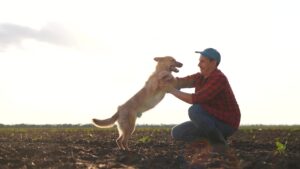Subscribe to Updates
Get the latest agriculture news and updates directly to your inbox.
Author: staff
Key Points The USDA has now missed three straight Crop Progress reports, leaving October with no official data from the department.Private surveys estimate corn harvest near 60% and soybeans over 70% complete nationwide.Agronomists report variable yields across the Corn Belt, with disease pressure and dry weather driving wide swings. The USDA was expected to publish the 29th Crop Progress report of the growing season today, but the report was not published for a third week because of the continued government shutdown. The shutdown has affected three of the four expected October reports from USDA. Just five more reports are anticipated…
Trick-or-treat: It’s time to stock up on something sweet! Americans are forecast to spend $3.9 billion on candy this Halloween, according to the National Retail Federation. That’s up from $3.6 billion last year and $3.1 billion in 2023. There’s no doubt: Halloween is largely about the tasty treats. Yet, you might face a fright as you purchase candy for the goblins and ghouls who haunt your door. The price you pay for candy has increased — while the already small amount our farmers receive for the sugar in that candy has decreased. The American Sugar Alliance looked at the prices…
CHICAGO, Oct. 20 (Reuters) – The U.S. soybean harvest was nearly three-quarters complete by Sunday and corn harvesting progressed as well, despite showers that interrupted field work in the eastern half of the Corn Belt, according to a Reuters poll of 11 analysts on Monday. Farmers were harvesting the biggest U.S. corn crop in history and a bumper soy crop. On average, the analysts estimated the soybean crop was 73% harvested by Sunday and the corn harvest was 59% complete. Estimates ranged widely from 61% to 82% for soybeans and 51% to 66% for corn. The U.S. Department of Agriculture…
DAILY Bites China bought zero U.S. soybeans in September, the first monthly shutout since 2018, even as total imports climbed to 12.87 MMT, the second-highest on record. Brazilian shipments rose to 10.96 MMT (~85%) and Argentina to 1.17 MMT (~9%), as tariffs and seasonality steered buyers away from U.S. beans, Reuters reports. Despite the September freeze-out, year-to-date U.S. shipments to China are still up ~15.5%. DAILY Discussion China imported no U.S. soybeans in September, the first month since November 2018 that American shipments fell to zero, even as overall arrivals surged to one of the largest monthly tallies on record.…
Top Third Ag Marketing helps farmers become better agricultural marketers with the goal of marketing crops and livestock in the top third of prices. Mark Gold and his team provide AGDAILY.com with the latest information and a look ahead in their audio commentary. Listen here! https://www.agdaily.com/wp-content/uploads/2025/10/top-third-agdaily-2025-10-20.mp3 The post Markets in Minutes: Top Third looks ahead for week of Oct. 20, 2025 appeared first on AGDAILY.
By Ryan Hanrahan The Associated Press’ Christopher Megerian reported that “President Donald Trump said Sunday that the United States could purchase Argentine beef in an attempt to bring down prices for American consumers.” “‘We would buy some beef from Argentina,’ he told reporters aboard Air Force One during a flight from Florida to Washington, D.C. ‘If we do that, that will bring our beef prices down.’ Trump promised earlier this week to address the issue as part of his efforts to keep inflation in check,” Megerian reported. “U.S. beef prices have been stubbornly high for a variety of reasons, including…
The U.S. cattle market ended last week in turmoil as futures tumbled in reaction to President Donald Trump’s comments about a plan to lower beef prices, followed by a weekend statement that the U.S. could import beef from Argentina. The remarks sparked immediate volatility, sending both live and feeder cattle contracts sharply lower and leaving producers and traders searching for clarity. Trump first made headlines on Thursday when he told reporters in the Oval Office that beef prices were “higher than we want it” and that his administration had a plan to bring them down “pretty soon.” Trump: “The only…
A little past 9:30 a.m. CT, December corn was down 2¢ at $4.20½ per bushel. November soybeans were up 8¼¢ at $10.27¾ per bushel. December CBOT wheat was down less than a penny at $5.03¼ per bushel. December KC wheat was down 1¾¢ at $4.89¾ per bushel. December Minneapolis wheat was up a penny at $5.49½. “President Trump spoke optimistically last night about his anticipated meeting with China’s President Xi on the sideline of the APEC [Asia-Pacific Economic Cooperation] conference in South Korea next week,” said Arlan Suderman, chief commodities economist at StoneX. “Trump indicated that he was optimistic about…
By Doina Chiacu and Andrea Shalal WASHINGTON, Oct 17 (Reuters) – U.S. Treasury Secretary Scott Bessent said on Friday he expects to meet next week with Chinese Vice Premier He Lifeng in Malaysia to try to forestall an escalation of U.S. tariffs on Chinese goods that President Donald Trump said was unsustainable. Bessent made the announcement during a White House cabinet meeting and later confirmed plans for a meeting after a call with He on Friday evening. Bessent said on X the two officials “engaged in frank and detailed discussions regarding trade between the United States and China.” “We will meet in-person next week…
By Ryan Hanrahan Reuters’ Trevor Hunnicutt reported that “President Donald Trump revived the trade war against Beijing on Friday, ending an uneasy truce between the two largest economies with promises to sharply hike tariffs in a reprisal against China curbing its critical mineral exports. The president unveiled additional levies of 100% on China’s U.S.-bound exports, along with new export controls on ‘any and all critical software’ by Nov. 1, nine days before existing tariff relief is set to expire.” “Trump also called into question the prospects for a previously announced meeting set for three weeks from now with Chinese President…


:max_bytes(150000):strip_icc()/Markets-8-Soybeans-up-corn-down-10-39d51bc414e3404d8a298ad3f60968ec.jpeg)




:max_bytes(150000):strip_icc()/IMG_8340-5f857148fd274f6593849e0afb0e0b72.jpeg)

:max_bytes(150000):strip_icc()/10621136395_38f39e393d_o-a21914f268db41cc81b6420c3d9cd545.jpg)


:max_bytes(150000):strip_icc()/100127689_beef-80af9325e74a4df98a7e34aec901401f.jpg)

:max_bytes(150000):strip_icc()/Markets-2-Soybeans-candlestick-up-4-432c2163294243f6a30af56ffe2030d2.jpeg)
:max_bytes(150000):strip_icc()/8293232288_8da55cc72e_o-b324a9331b0a48b487dd867154d53c50.jpg)
:max_bytes(150000):strip_icc()/china-america-flags-1-2000-ef792f3551ca4afdb85bb499e24dbdc4.jpg)